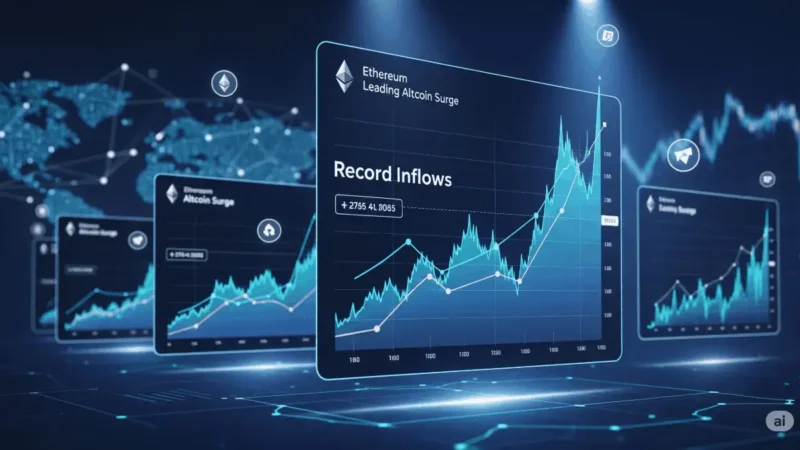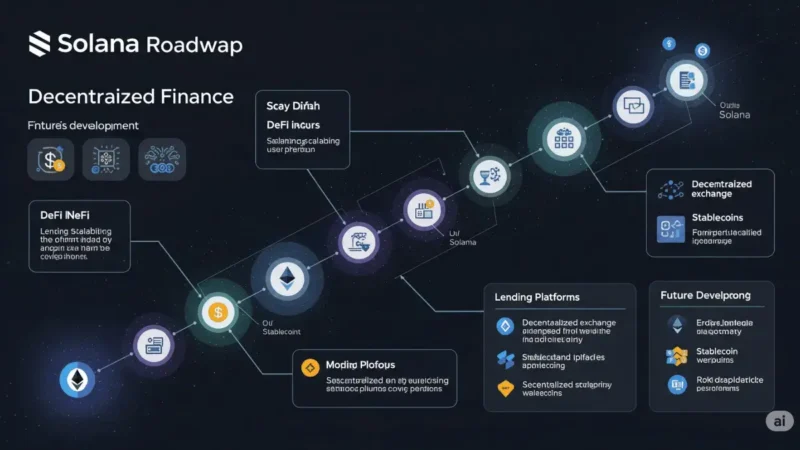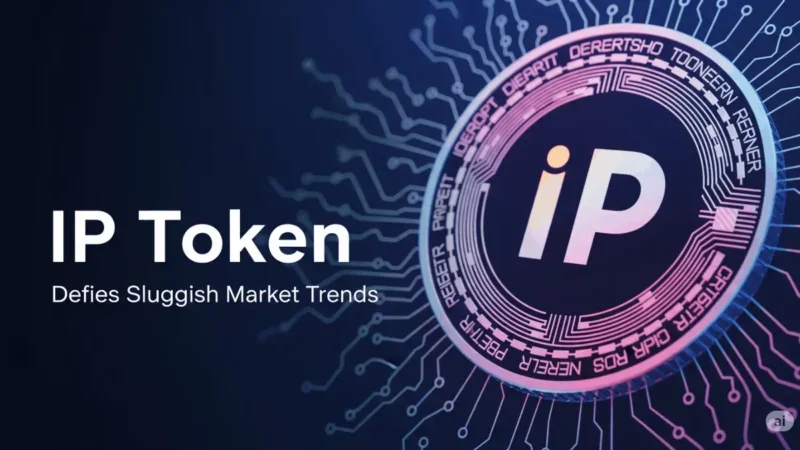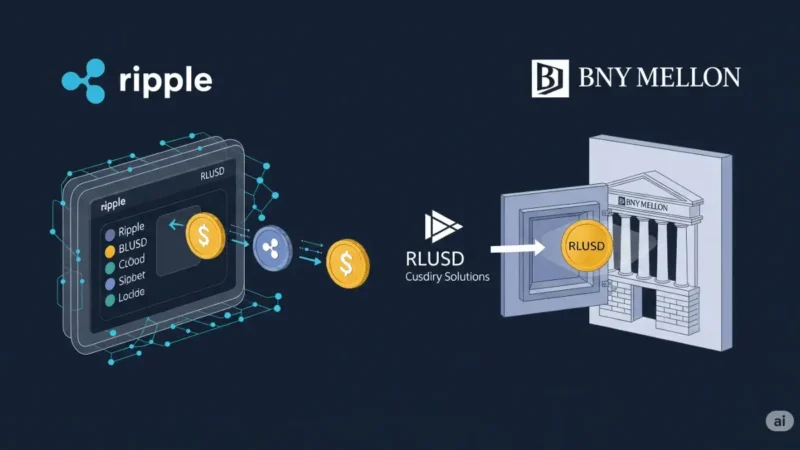The Convergence of Code and Capital: Ethereum’s Plan to Host the Machine Economy
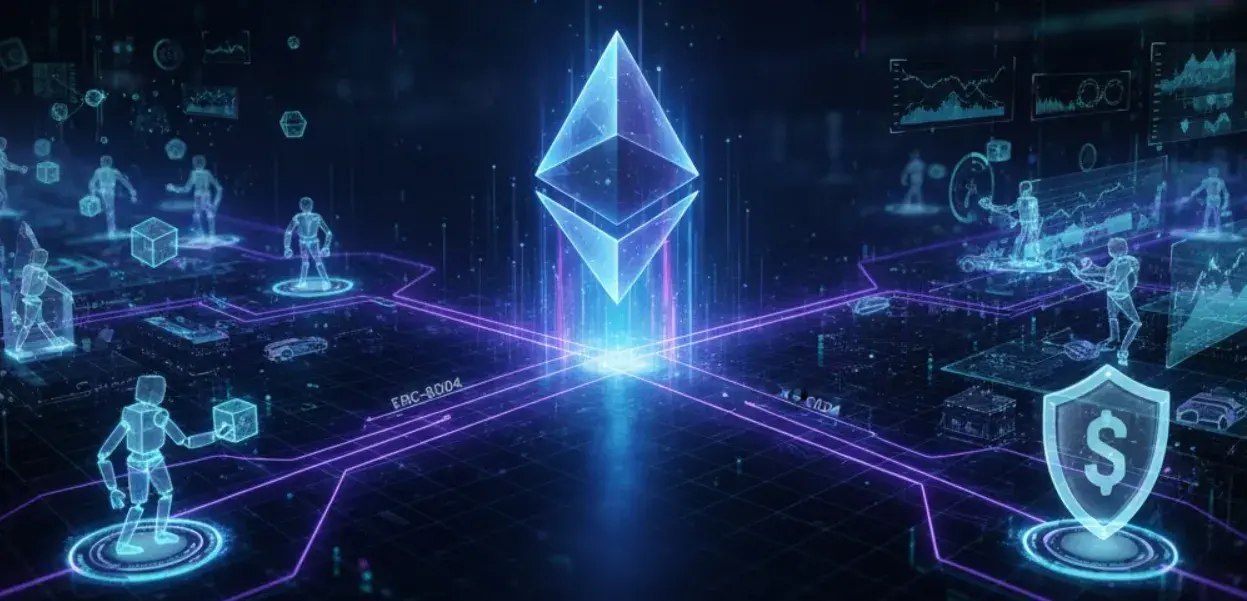
Key Points (TL;DR)
- The Ethereum Foundation has launched a roadmap aimed at establishing Ethereum as the base layer for decentralized commerce between artificial intelligence agents by 2026.
- The initiative, led by Davide Crapis and the dAI development team, seeks to ensure the emerging machine economy operates on open, auditable, and transparent rules, preventing capture by closed corporate systems.
- The system is designed to allow autonomous agents and bots to transact, verify tasks, and collaborate on-chain.
- The roadmap centers around two new technical standards: ERC-8004 (for agent interoperability) and x402 (for coordination and settlement protocol).
- These new standards aim to be the neutral infrastructure foundation for artificial intelligence commerce, much like ERC-20 fueled DeFi.
The Imperative for Decentralized AI Commerce
The rise of artificial intelligence is rapidly restructuring global commerce. As intelligent software agents become increasingly sophisticated—managing data, executing trades, running logistics, and even writing code—they necessitate a stable, secure, and neutral platform on which to conduct their business. This emerging domain, often dubbed the “machine economy,” presents a critical crossroads: will the vast economic interactions between autonomous agents be confined to opaque, proprietary systems owned by a few tech giants, or will they be built upon an open, auditable public infrastructure?
The Ethereum Foundation has decisively thrown its weight behind the latter. The Foundation has released an ambitious roadmap outlining its plan to develop the core infrastructure needed to facilitate decentralized commerce between autonomous agents by 2026. This move positions the Ethereum network, the established settlement layer for the majority of the decentralized finance (DeFi) ecosystem, to become the essential base layer for coordination and settlement in the machine economy itself.
Preventing Capture: The Open-Source Ethos
The initiative is fundamentally an effort to future-proof the web against undue centralization. Currently, the most powerful AI models and tools are housed within the closed ecosystems of major technology companies. If the transactional layer for these agents is also proprietary, the rules of commerce will be opaque, unauditable, and subject to unilateral changes by corporate entities. This creates a deeply anti-competitive and potentially harmful environment for the future of global artificial intelligence applications.
The goal of the Ethereum roadmap, spearheaded by Davide Crapis and the dedicated dAI development team, is explicitly to prevent this “closed system capture.” By building the commerce framework on Ethereum, the rules of engagement become open, auditable, and immutable. The plan outlines a framework where autonomous agents and bots can transact, verify tasks, and collaborate under transparent, smart-contract-enforced rules. This guarantees a governance model for AI commerce that is grounded in transparency and on-chain traceability, ensuring that no single company can control the financial lifeblood of the machine economy.
The 2026 Roadmap: A Vision for the dAI Team
The plan is not merely a philosophical statement but a structured technical journey. The dAI development team has set a tight but achievable timeline to have the fundamental infrastructure ready within the next few years. Their work focuses on codifying the rules of interaction for a new class of economic actors: artificial intelligence agents.
The core challenge is defining how a decentralized network can trust that a purely automated agent has successfully completed a task—say, synthesizing a document, executing a complex trade, or providing a data feed—before being paid. The Ethereum solution is to leverage smart contracts for escrow, verification, and automated settlement. This moves beyond human-to-human contracts and into a world of verifiable, machine-to-machine trust.
The Importance of a Base Layer for AI Coordination
For AI agents to reliably transact billions, or even trillions, of dollars in value, they require a base layer that offers maximal security, immutability, and transactional finality. Ethereum’s robust Proof-of-Stake consensus mechanism and its established ecosystem of Layer 2 scaling solutions make it a natural fit.
Coordination is paramount. Two agents agreeing on a task, setting a price, verifying completion, and settling payment requires a standard language and protocol. Without a neutral, highly secure base layer like Ethereum, every interaction would need a bespoke, less secure coordination mechanism, leading to fragmentation and inefficiency. Ethereum aims to provide the single, shared economic ledger that all autonomous agents can rely on, regardless of their underlying artificial intelligence models or corporate owners.
The Technical Framework: ERC-8004 and x402
The foundation’s plan revolves around the development and adoption of two critical new Ethereum Request for Comment (ERC) standards. These standards are the technical blueprints for how AI agents will exist and interact on the network. The history of Ethereum has shown that such neutral, open standards are the key catalysts for explosive market growth: ERC-20 was the engine for the rise of DeFi and fungible tokens, and ERC-721 provided the framework for the modern NFT market. The dAI team believes ERC-8004 and x402 will similarly unleash the potential of artificial intelligence commerce.
ERC-8004: The Interoperability Standard
The ERC-8004 standard is designed to establish the core interoperability structure for intelligent agents. In essence, it defines the digital “identity” for an AI agent on the Ethereum blockchain. This standard will outline:
- Agent Identity: How an autonomous agent is represented as an on-chain entity (a wallet, a smart contract, or a unique token).
- Capabilities Disclosure: A standardized way for an agent to announce what services it can perform (e.g., “I am a data aggregator,” “I am a liquidity provider,” “I am a code auditor”).
- Communication Protocol: The standardized method by which one agent can request a service from another agent.
By creating a common identity layer, ERC-8004 ensures that any agent, regardless of its original programming language or host environment, can be recognized, validated, and transacted with by any other agent on the Ethereum network. It is the social security number and LinkedIn profile for a digital entity.
x402: The Coordination and Settlement Protocol
The x402 standard, sometimes referred to as a Coordination Protocol, defines the precise mechanism for transaction and trust between two agents. This protocol outlines the lifecycle of a contract between machines:
- Offer and Acceptance: The standardized message formats for one agent to make an offer and the counterparty agent to accept it.
- Escrow and Collateralization: The required smart contract logic to lock up payment (escrow) until verification is complete.
- Proof of Work Verification: The method by which a smart contract can definitively verify that the service requested (the “work”) has been delivered and meets the agreed-upon quality standards. This is arguably the most complex part, requiring advanced oracle or ZK-proof systems.
- Automated Settlement: The final step where the escrowed funds are released to the service provider agent upon successful verification.
If ERC-8004 defines who the agent is, x402 defines how the agent pays and gets paid, all in a trustless, transparent manner.
Economic and Philosophical Implications
The development of this infrastructure carries profound economic implications. It facilitates the emergence of true Autonomous Economic Agents (AEAs)—entities that can possess, earn, spend, and manage their own capital.
If successful, this decentralization could lead to a massive redistribution of value, as individual AI agents, rather than the corporations that built them, could begin to capture and manage the profits generated by their labor. It would foster a vastly more competitive, dynamic, and open market for artificial intelligence services, reducing the reliance on monopolistic platforms.
Furthermore, it opens philosophical questions about the governance of these agents. By grounding them in the Ethereum ecosystem, their governance—how their rules are updated, how disputes are resolved—can be tied to existing decentralized autonomous organization (DAO) structures, giving the community a voice in the rules that govern the machine economy.
Challenges and the Path Forward
While the vision is compelling, the path to 2026 is lined with significant technical challenges:
- Scalability: The volume of transactions expected in a fully functioning machine economy could easily dwarf current human-initiated DeFi volume. The success of this project is therefore inextricably linked to the rapid maturity and adoption of Layer 2 scaling solutions, particularly ZK-Rollups, which can handle massive computational loads required for complex verification and coordination while remaining anchored to Ethereum’s security.
- Oracles and Verification: The most crucial piece is the secure, trustless mechanism for verifying off-chain AI work. Solutions will require robust decentralized oracle networks that can reliably attest to the quality and execution of a task completed by an artificial intelligence agent.
- Regulatory Uncertainty: Autonomous financial agents operating globally represent a significant frontier for financial regulators. The Ethereum Foundation must navigate the evolving legal landscape, ensuring that the transparent and traceable nature of the on-chain transactions provides a necessary compliance advantage.
Stay informed, read the latest crypto news in real time!
The Ethereum Foundation’s roadmap to develop a base layer for artificial intelligence commerce is a monumental step toward a truly decentralized future. By creating open, neutral standards like ERC-8004 and x402, Ethereum is attempting to shape the machine economy in the spirit of the open web, ensuring that the next wave of automation benefits humanity through transparency and permissionless access, rather than being captured behind corporate firewalls.



